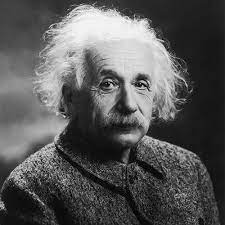Albert Einstein, a renowned physicist and one of the greatest scientific minds of the 20th century, was born on March 14, 1879, in Ulm, Germany. His groundbreaking contributions to theoretical physics, particularly his theory of relativity, reshaped our understanding of the universe. This essay will delve into Einstein’s early life, education, notable discoveries and inventions, and the profound impact he had on science before and after 1950.
Early Life and Education:
Growing up in a middle-class Jewish family, Einstein excelled in physics and mathematics from an early age. He obtained his education in Switzerland, completing his schooling in Aarau. In 1900, Einstein graduated from the Swiss Federal Polytechnic in Zurich, Switzerland, where he pursued his studies to become a physics and mathematics teacher.
Contribution and Impact Before 1950:
Einstein’s intellectual journey took off in 1905 when he published his groundbreaking paper on the theory of relativity, known as the special theory of relativity. This theory revolutionized physics by challenging the notion of absolute time and space and introducing the concept of the speed of light as the ultimate limit. His equation E=mc², which states the equivalence of mass and energy, became an iconic symbol of his work. Einstein’s contributions to physics laid the foundation for further advancements in quantum mechanics and the understanding of black holes and the nature of the universe.
Invention and Impact After 1950:
Beyond his arguably most famous accomplishment, Einstein continued to make significant contributions to the scientific community after 1950. He dedicated much of his time to the pursuit of a unified field theory that aimed to unite all fundamental forces in nature. Although he did not succeed in achieving this unification, his efforts paved the way for subsequent research and advancements in physics, leading to the development of theories such as string theory.
Fun Fact:
Despite his immense contributions and influence, Einstein had some interesting quirks. For instance, he was an avid violinist and believed that music played a crucial role in inspiring his scientific discoveries. Additionally, Einstein had a famously messy appearance, often sporting unruly hair and wearing mismatched socks.
Conclusion:
Albert Einstein’s transformative contributions to physics and his theories of relativity have left an indelible mark on scientific thought. His revolutionary insights and discoveries not only challenged established beliefs but also paved the way for further exploration and understanding of the universe. Einstein’s influence before and after 1950 extends far beyond the realm of theoretical physics, shaping our understanding of the fabric of space, time, and energy. His intellectual legacy continues to inspire and guide scientists in their pursuit of knowledge and understanding of the universe we inhabit.
By: YELWANDE PRANOTI KIRAN
Write and Win: Participate in Creative writing Contest & International Essay Contest and win fabulous prizes.
















